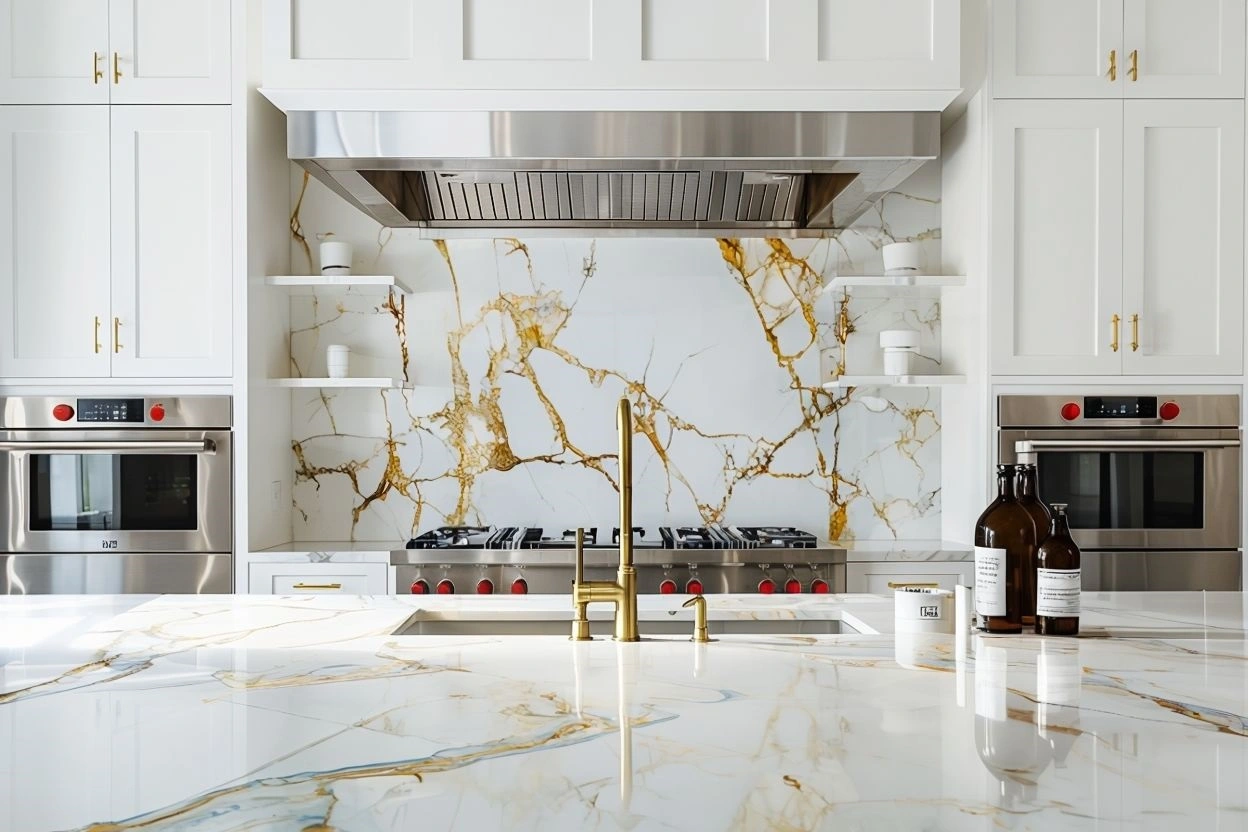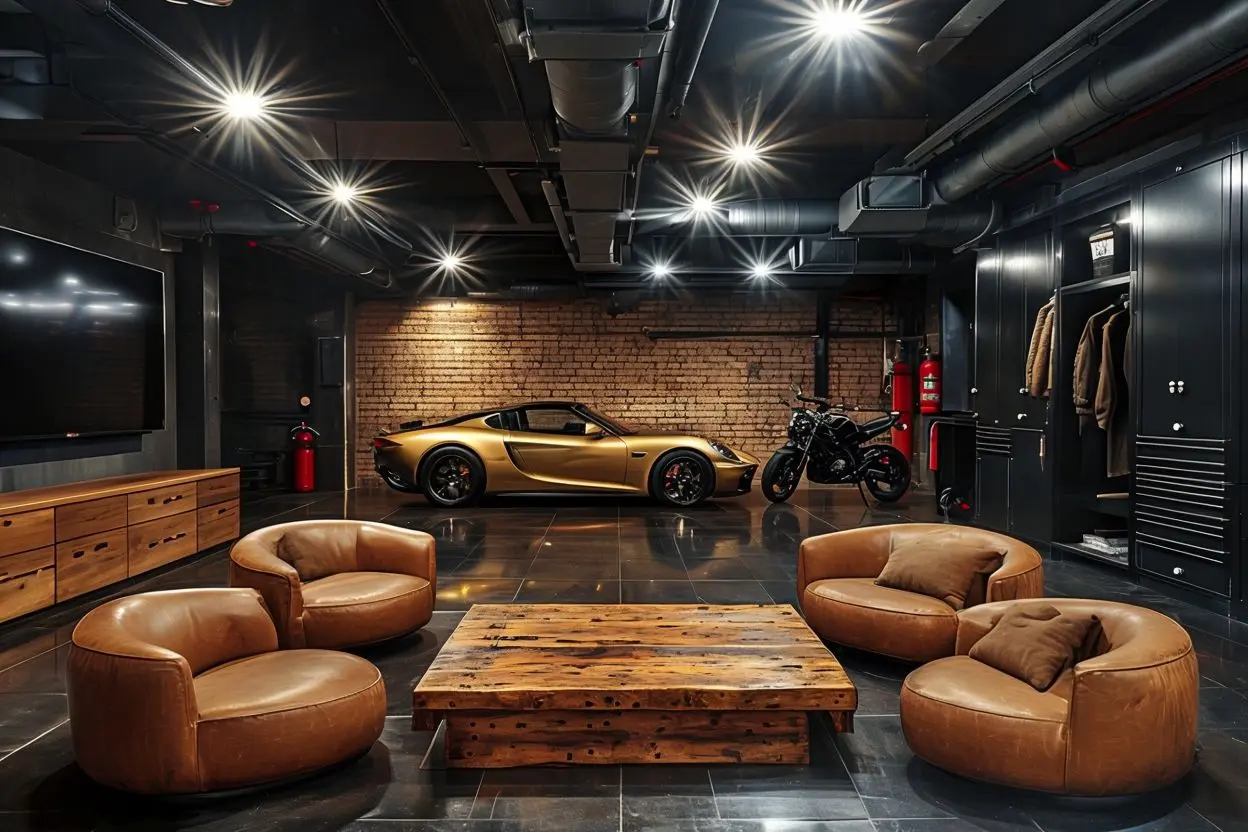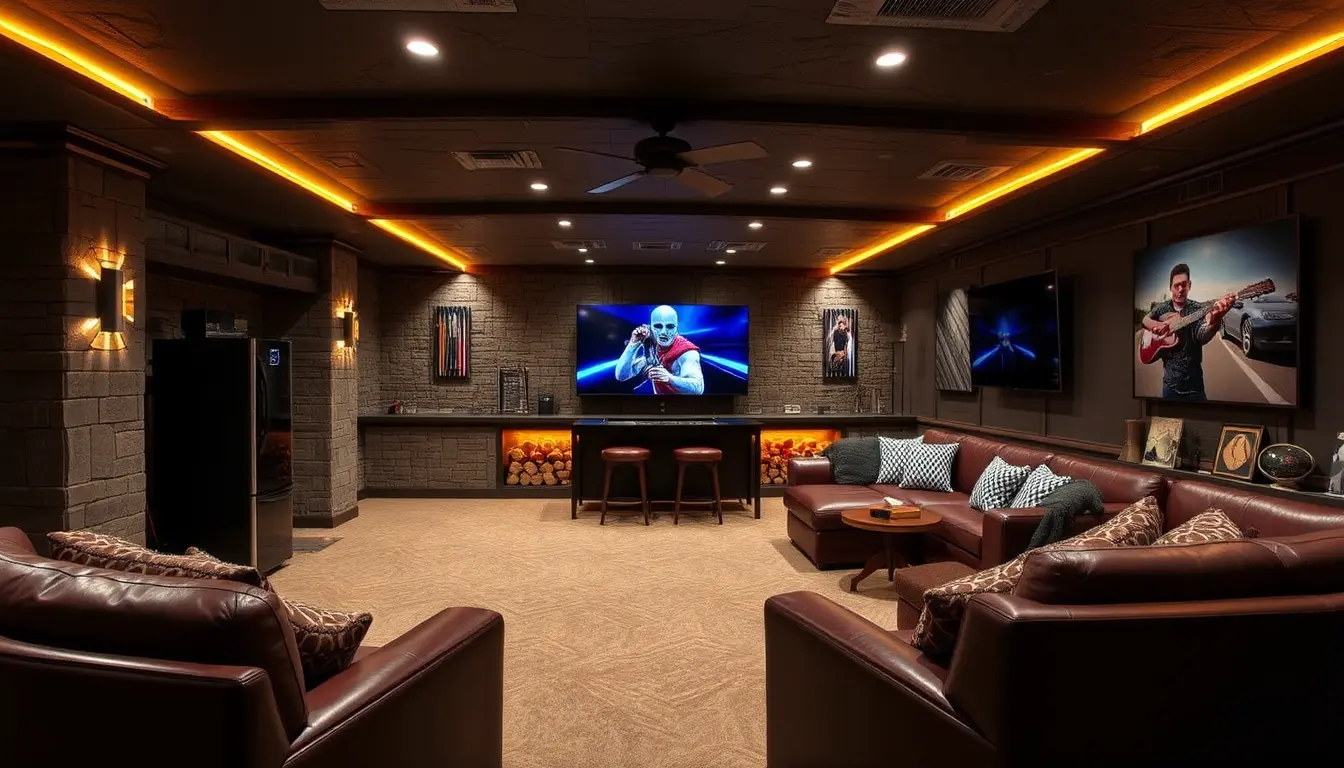Declutter and Organize: The Heart of a Minimalist Kitchen
Let me share something funny – when I first decided to minimize my kitchen, I found three identical vegetable peelers and six spatulas! It’s amazing what we accumulate over time. The first step in creating a minimalist kitchen is taking stock of what you use. I recommend my clients start with what I call the “two-week test”: for two weeks, place a sticky note on each item you use. After the test period, seriously consider whether you need the untouched items.
Here’s my tried-and-true decluttering process:
- Remove everything from your cabinets and drawers
- Sort items into three piles: daily use, occasional use, and rarely/never use
- Be honest about specialty gadgets (I’m looking at you, avocado slicer!)
- Keep only the best version of duplicate items
- Consider donating useful but unnecessary items
I recently helped a client who was overwhelmed by her kitchen clutter. She was surprised to discover she had five different sets of measuring cups but no proper cutting board! Sometimes we hold onto things out of habit rather than necessity.
When tackling the decluttering process, I recommend these additional strategies:
- Set a timer for 20 minutes and focus on one area at a time
- Create a “maybe” box for items you’re unsure about
- Take photos of sentimental items you rarely use before donating them
- Document your progress to stay motivated
- Involve family members in the decision-making process
Remember, decluttering isn’t just about getting rid of things – it’s about creating space for joy and functionality in your kitchen.
Additional Tips for Decluttering
When decluttering, keep in mind that it’s a gradual process that doesn’t have to be done in a single day. Some people find it helpful to go through their kitchen in stages, tackling one drawer, one shelf, or even one type of item (like baking tools or utensils) at a time. This helps prevent burnout and lets you reflect on your progress.
Another helpful trick is to take inventory of items you seldom use. For instance, if you have gadgets specifically for juicing or making pasta that you rarely touch, ask yourself if they truly need a place in your kitchen. You might find that you use these specialty items only a few times a year—making them prime candidates for donation.
Also, if you love to entertain or cook with friends, consider choosing multi-functional items that work for these occasions. Stackable bowls that double as serving dishes, large cutting boards that can function as cheese boards, or versatile glass containers that look great on a table as well as in the fridge are great additions to a minimalist kitchen.
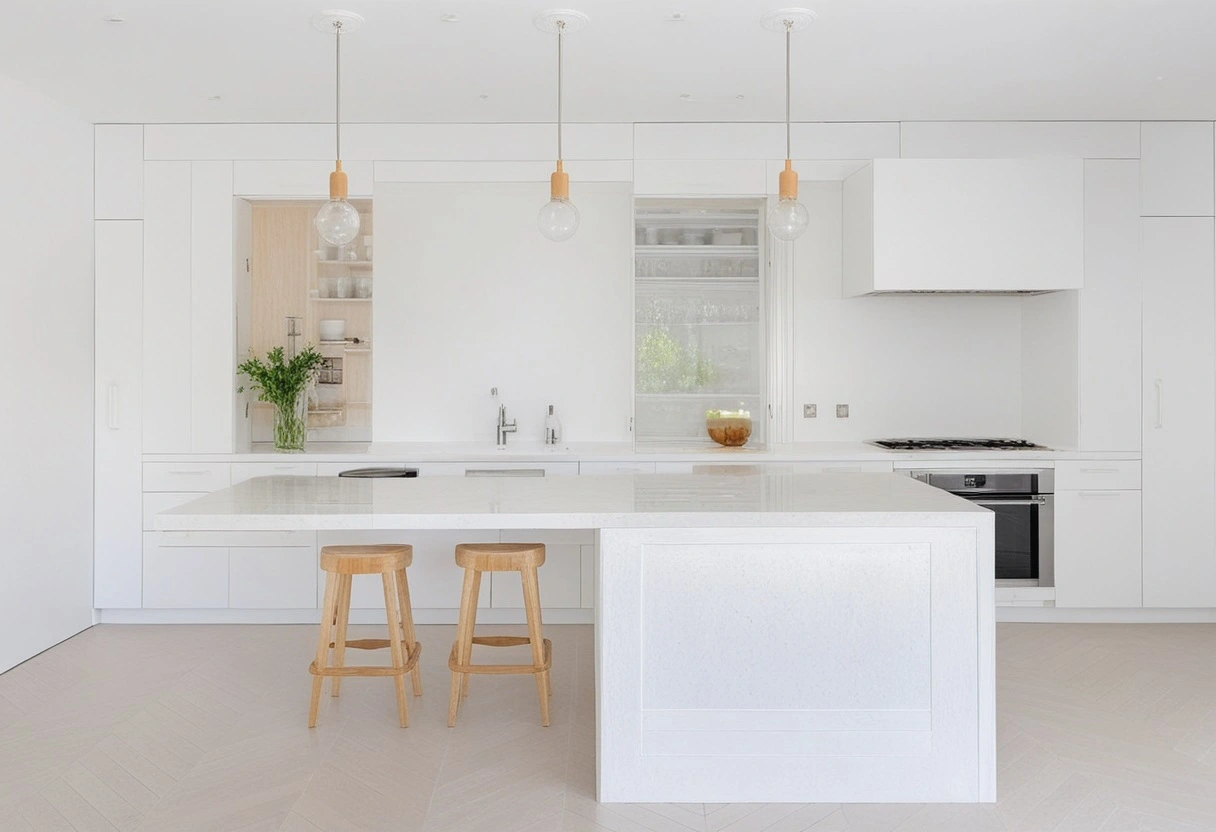
Maintaining a Clutter-Free Kitchen
After you’ve decluttered, one key to a minimalist kitchen is maintaining it. Try implementing a quick weekly reset where you reorganize any items that have been misplaced and remove anything that has found its way into your space unnecessarily. This routine keeps the minimalist vibe going without requiring a major overhaul every few months.
Consider seasonal cleanouts as well. Around the holidays or when seasons change, go through your kitchen tools and storage areas to ensure you’re keeping only what you need. These regular check-ins keep clutter under control and give you a chance to reorganize based on your changing needs.
Essential Tools and Equipment: Quality Over Quantity
After years of helping people streamline their kitchens, I’ve developed what I call the “Minimalist Kitchen Toolkit.” These are the items that I’ve found truly essential for 90% of cooking tasks:
Core Cooking Tools:
- One high-quality chef’s knife (this changed my cooking life!)
- One paring knife
- Two cutting boards (one for produce, one for meat)
- A set of stainless steel mixing bowls
- Measuring cups and spoons (one set each)
- Two wooden spoons
- One silicone spatula
- One pair of tongs
- One colander
- One grater/microplane
Essential Cookware:
- One large stainless steel skillet (10-12 inch)
- One cast-iron pan
- One large pot for soups/pasta
- One medium saucepan
- One sheet pan
- One casserole dish
Let’s dive deeper into choosing quality equipment. When selecting your essential tools, consider these factors:
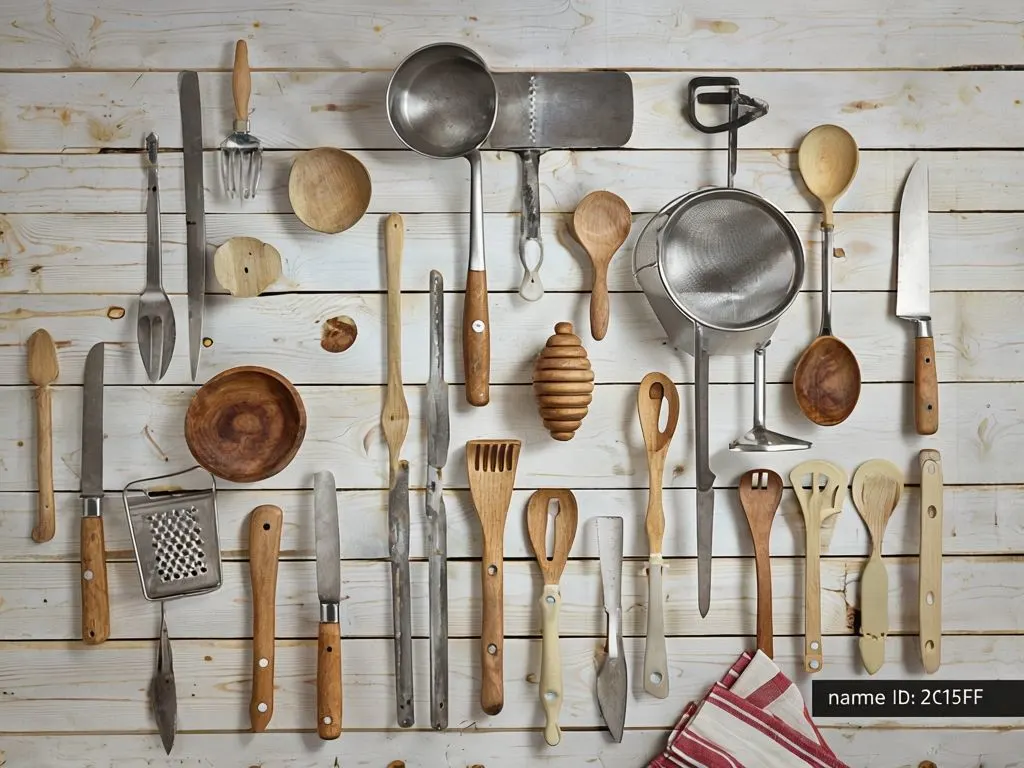
Knife Selection:
- Weight balance in your hand
- Blade material (I recommend high-carbon stainless steel)
- Handle comfort during extended use
- Maintenance requirements
- Versatility for different cutting tasks
Cookware Considerations:
- Heat distribution properties
- Durability and longevity
- Ease of cleaning
- Versatility across cooking methods
- Storage space requirements
I learned this lesson the hard way – I used to have three non-stick pans of varying quality. Now I have one excellent stainless steel skillet that I use daily and it works better than all three of those old pans combined. Remember, it’s better to have one great tool than five mediocre ones.
Additional Insights: Choosing Quality Tools
When it comes to selecting high-quality kitchen tools, remember that you don’t have to invest in the most expensive items right away. A solid chef’s knife and cast-iron pan can last you a lifetime, so it’s worth saving up and choosing these items carefully. However, other items—like mixing bowls or measuring cups—can be found affordably and still serve your needs perfectly.
For example, I’ve found that some of my most-used tools are simple, like a basic stainless steel colander or a sturdy whisk. When you select tools with multiple uses, they earn their place in a minimalist kitchen. For example:
- A skillet with a lid doubles as a pan for sautéing or frying and as a small “oven” for dishes that need covered cooking.
- Glass containers work great for food storage but can also double as serving dishes or even be used in the oven if they’re heatproof.
Consider Long-Term Maintenance
Think about how each item fits into your routine in terms of maintenance, too. For example, a carbon steel knife is excellent for sharpness, but it requires regular honing and drying after each use to avoid rust. Stainless steel may require less attention, making it a better choice for some. A truly minimalist kitchen balances efficiency with upkeep, ensuring every tool is easy to use and care for.
Smart Storage Solutions: A Place for Everything
The secret to maintaining a minimalist kitchen isn’t just having less stuff – it’s storing it intelligently. When I redid my own kitchen, I spent more time planning the storage than choosing appliances, and it was worth every minute!
Vertical Storage Solutions:
- Install magnetic knife strips instead of using knife blocks
- Use pegboards for frequently used tools
- Add hooks under cabinets for mugs or cooking tools
- Consider pull-out organizers for deep cabinets
Cabinet Organization:
- Store items by frequency of use (daily items at eye level)
- Use clear containers for pantry staples
- Implement drawer dividers for utensils
- Add shelf risers to maximize vertical space
Advanced Storage Strategies:
- Zone your kitchen based on workflow (prep zone, cooking zone, cleaning zone)
- Use drawer dividers that can be adjusted as your needs change
- Install pull-out corner units to maximize “dead” corner space
- Implement a rotating cleaning schedule for different storage areas
- Create a designated “cooking station” with frequently used items within arm’s reach
One game-changing tip I learned from a professional chef: create a “prep kit” – a small container with your most-used tools that can be easily pulled out and put away. Mine includes:
- My favorite knife
- A small cutting board
- Measuring spoons
- A peeler
- Kitchen scissors
Additional Smart Storage Tips
Creating zones in the kitchen based on functionality helps maintain order. For instance:
- Prep Zone: Keep knives, cutting boards, and mixing bowls close together.
- Cooking Zone: Place pots, pans, and spatulas near the stove.
- Cleaning Zone: Store sponges, dish soap, and towels under the sink for easy access.
Drawer dividers and bins can be your best friend in a minimalist kitchen. If you want to keep utensils and gadgets from becoming a jumbled mess, adjustable dividers allow you to create compartments that fit your needs.
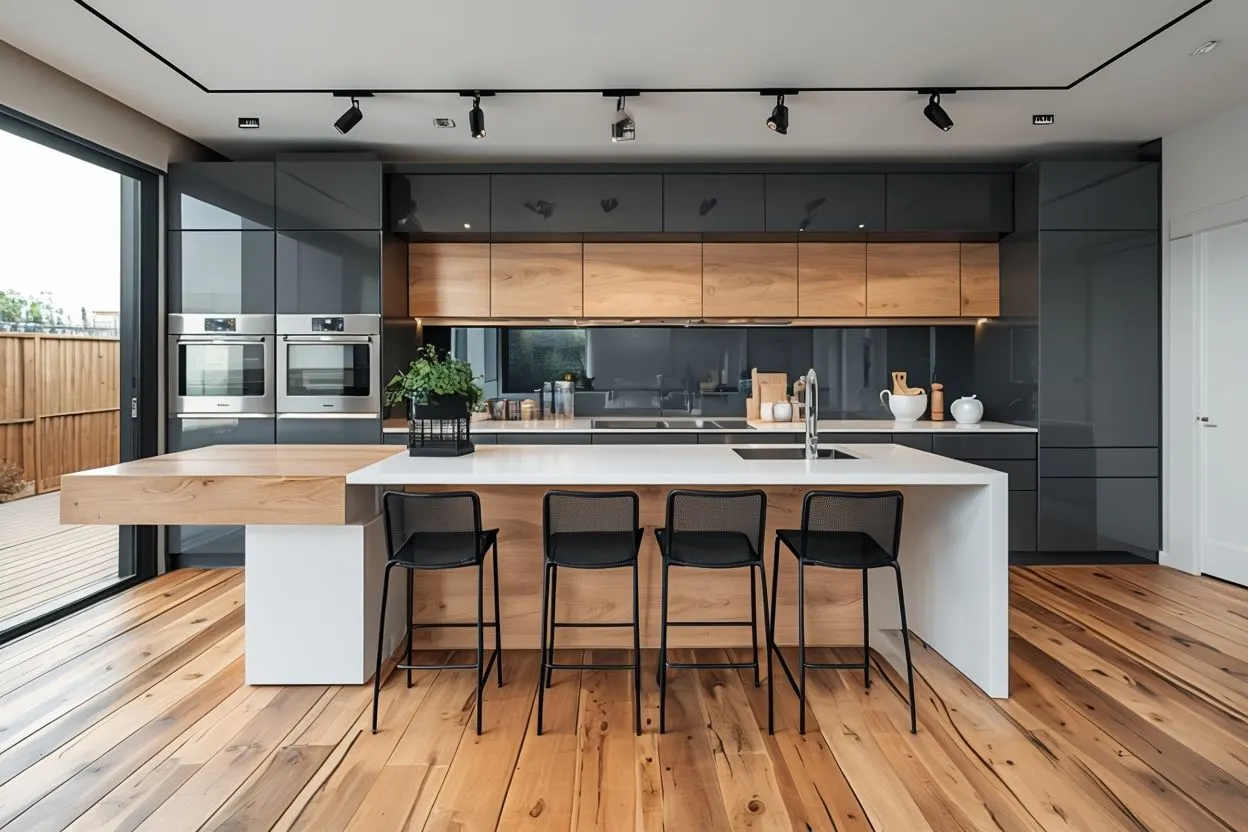
Maximize Small Spaces
If you have a small kitchen, every inch of storage matters. Install vertical racks or hooks on the inside of cabinet doors for items like pot lids or measuring spoons. Try using stacking shelves within cabinets to create layers, especially for items you don’t reach for every day.
Minimalist Food Storage and Pantry Management
Here’s something that surprised me when I first embraced kitchen minimalism – an organized pantry actually helped me waste less food and save money! I now use what I call the “Clear Container System”:
Essential Storage Items:
- Airtight glass containers for dry goods
- Mason jars for spices and smaller items
- Clear bins for categorizing similar items
- Labels (trust me, they’re worth the effort!)
Pantry Organization Tips:
- Keep only one type of staple (one type of rice, not four)
- Store similar items together
- Maintain a “first in, first out” rotation system
- Keep an inventory list (I use a simple whiteboard)
Advanced Pantry Management:
- Digital Inventory System:
- Use a spreadsheet or app to track expiration dates
- Set up automatic reminders for restocking staples
- Track seasonal items and rotate accordingly
- Meal Planning Integration:
- Create a weekly meal plan based on pantry inventory
- Maintain a running shopping list
- Schedule regular pantry audits
- Storage Zones:
- Breakfast station
- Baking supplies
- Quick meals
- Snacks
- Backup supplies
- Strategic Shopping:
- Buy in bulk only for frequently used items: It can be tempting to stock up on bulk items, but buying too much of an infrequently used item can add clutter. For instance, if you use rice regularly, buying it in bulk makes sense. However, specialty items, like rare spices, might be better purchased in small amounts to avoid overcrowding.
- Choose package sizes that fit your storage containers: If your pantry storage relies on specific container sizes, try to buy items that will fit without needing to repackage them each time. This simplifies restocking and reduces the likelihood of containers going unused.
- Consider storage space before purchasing new items: Always check if you have adequate space before bringing home more food. If you see a sale on an item but realize it won’t fit into your pantry system, it may be best to pass. This approach prevents overstocking and keeps things organized.
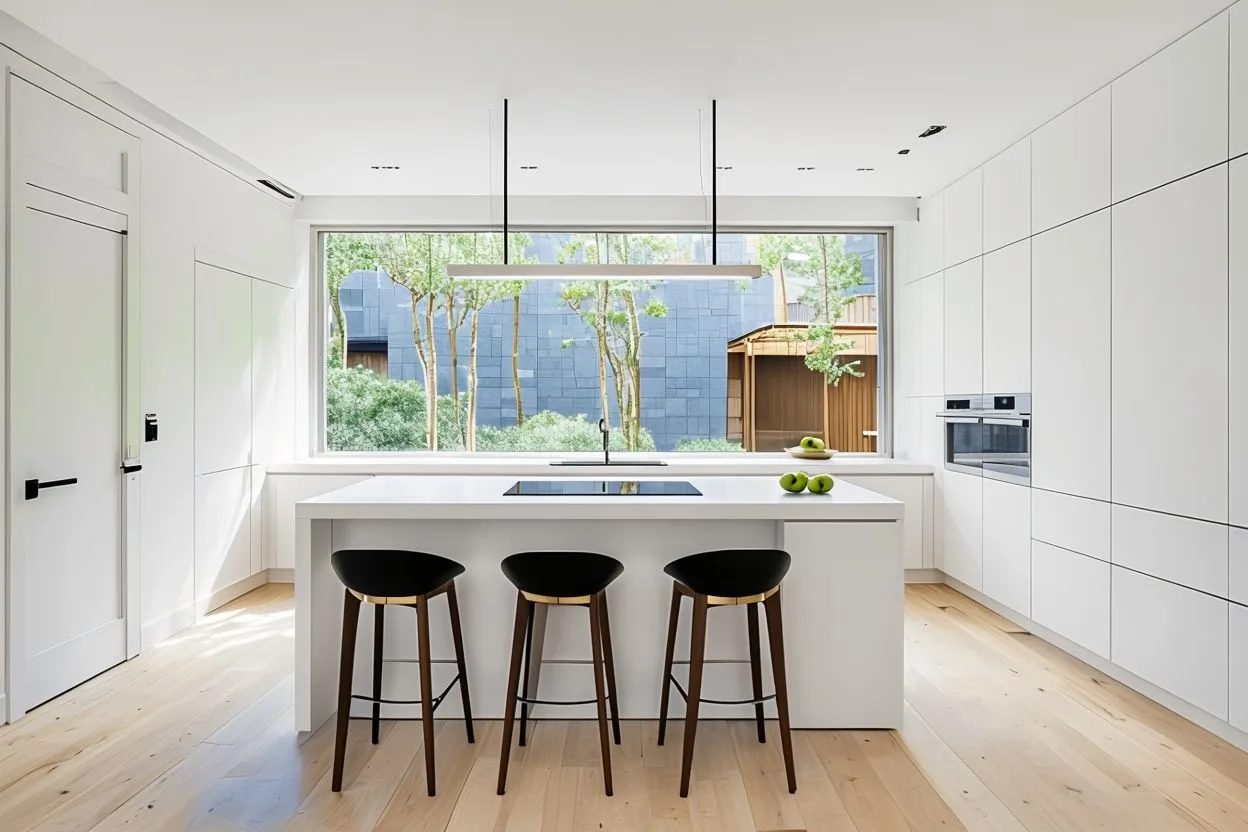
Batch Cooking and Freezing:
- A minimalist kitchen can be incredibly functional when it supports batch cooking and freezing. You can save time by preparing ingredients or meals in bulk and storing them efficiently.
- Use labeled containers to store pre-cut vegetables, cooked grains, and proteins in the freezer. A few hours of meal prep can yield a week’s worth of meals or snacks, all stored neatly in the freezer. One of my favorite client success stories involves a family who was constantly ordering takeout because their kitchen felt too chaotic to cook in. After implementing these storage solutions, they found themselves enjoying cooking again and saving hundreds of dollars monthly on food costs.
Organized Labeling:
- Labels might seem like a minor detail, but they’re a huge time-saver. When you label each container with the item name and expiration date, it’s easy to keep track of what you have and use items up before they spoil.
- DIY Labeling Hacks: If you’re a fan of changing up your pantry staples, try chalkboard labels or washable markers on glass containers. This way, you can update the labels as you refill containers.
Embrace Multi-Use Items to Save Space
In a minimalist kitchen, each item should ideally serve multiple purposes. This doesn’t mean sacrificing quality; it means choosing wisely. Here are some multi-functional items that can reduce clutter:
- Cast-Iron Skillet: Works as a frying pan, baking dish, and even a grill. With proper seasoning, it can handle anything from scrambled eggs to a seared steak.
- Dutch Oven: Great for soups, stews, bread baking, and roasting. It’s heavy-duty and versatile enough to replace several pots.
- Immersion Blender: An immersion blender takes up less space than a traditional blender and can be used for soups, sauces, smoothies, and even whipped cream.
- Instant Pot or Pressure Cooker: These are excellent for preparing grains, beans, soups, and even desserts quickly. The Instant Pot, in particular, combines multiple appliances into one: a slow cooker, pressure cooker, and rice cooker.
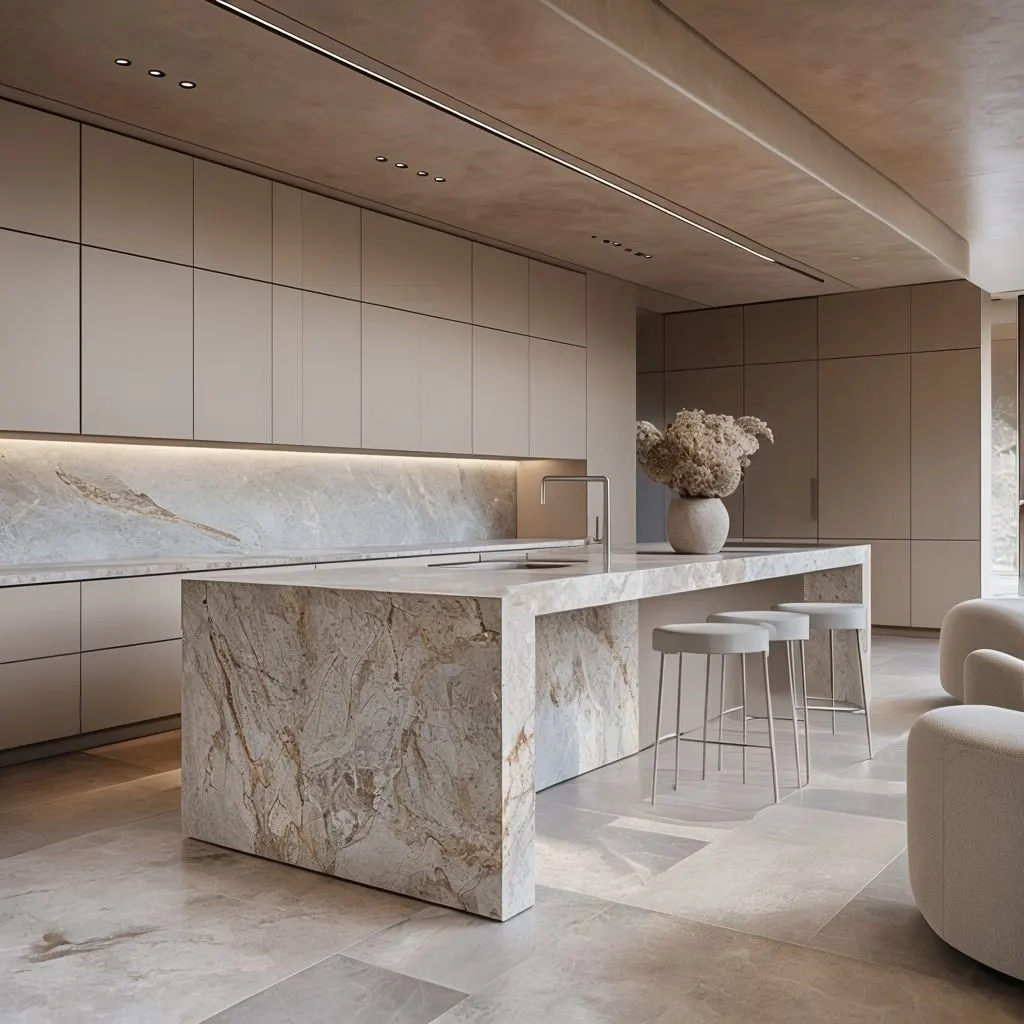
Minimalist Kitchen Routines to Maintain Simplicity
A minimalist kitchen shines when it’s easy to maintain, so developing routines to keep everything in order is key. Here are a few ideas:
Daily Routines:
- Quick 5-Minute Reset: Take a few minutes at the end of the day to wipe down counters, put away dishes, and check that everything is in its place. This routine ensures that each day starts with a tidy kitchen.
- Dish Management: Try to wash dishes as you cook to avoid a large pile-up. Keeping the sink and counter clear keeps things organized and stress-free.
Weekly Routines:
- Inventory and Meal Planning: Take a quick inventory of your pantry and fridge each week before shopping. This way, you only buy what you need, and it encourages you to use up ingredients you already have.
- Deep Cleaning: Pick one section of your kitchen each week (such as the pantry, fridge, or spice rack) to clean and organize. This rotating schedule makes it easier to keep everything in good shape without feeling overwhelming.
Monthly Routines:
Freezer and Pantry Cleanout: Rotate and use items that have been in the freezer or pantry for a while. This practice prevents waste and helps you maintain a clear inventory.
Declutter Audit: Once a month, take stock of tools and gadgets that may have crept into your kitchen. It’s easy for new items to slip into your space, so a regular audit keeps clutter at bay.
Cultivate a Minimalist Mindset
In the end, a minimalist kitchen isn’t just about reducing items; it’s about changing your mindset and habits around cooking, storage, and meal prep. Here are some principles to cultivate that minimalist mindset:
Appreciate the Essentials
By limiting your tools and ingredients to only those that bring you value, you create a kitchen that reflects simplicity and efficiency. Instead of focusing on what you might be missing, celebrate the ease that comes with owning fewer, but higher-quality, items.
Practice Mindful Cooking
Cooking itself can be a minimalist act. Start by choosing simple recipes with a few core ingredients. Focusing on high-quality ingredients and techniques can create delicious meals without needing elaborate tools or appliances. Simple meals bring out the natural flavors of food and reduce preparation and cleanup time.
Create a Welcoming Space
A minimalist kitchen is meant to invite you in, not keep you out. Keep items within easy reach, create clear workspaces, and add a personal touch, like a plant or a favorite cookbook, to make the kitchen feel welcoming.
Enjoy the Process
Minimalism isn’t about deprivation—it’s about having exactly what you need and loving it. So, enjoy the clarity, space, and peace that a minimalist kitchen brings. Cooking becomes more fun, efficient, and enjoyable when you know your kitchen is organized and only holds items that you genuinely use and love.
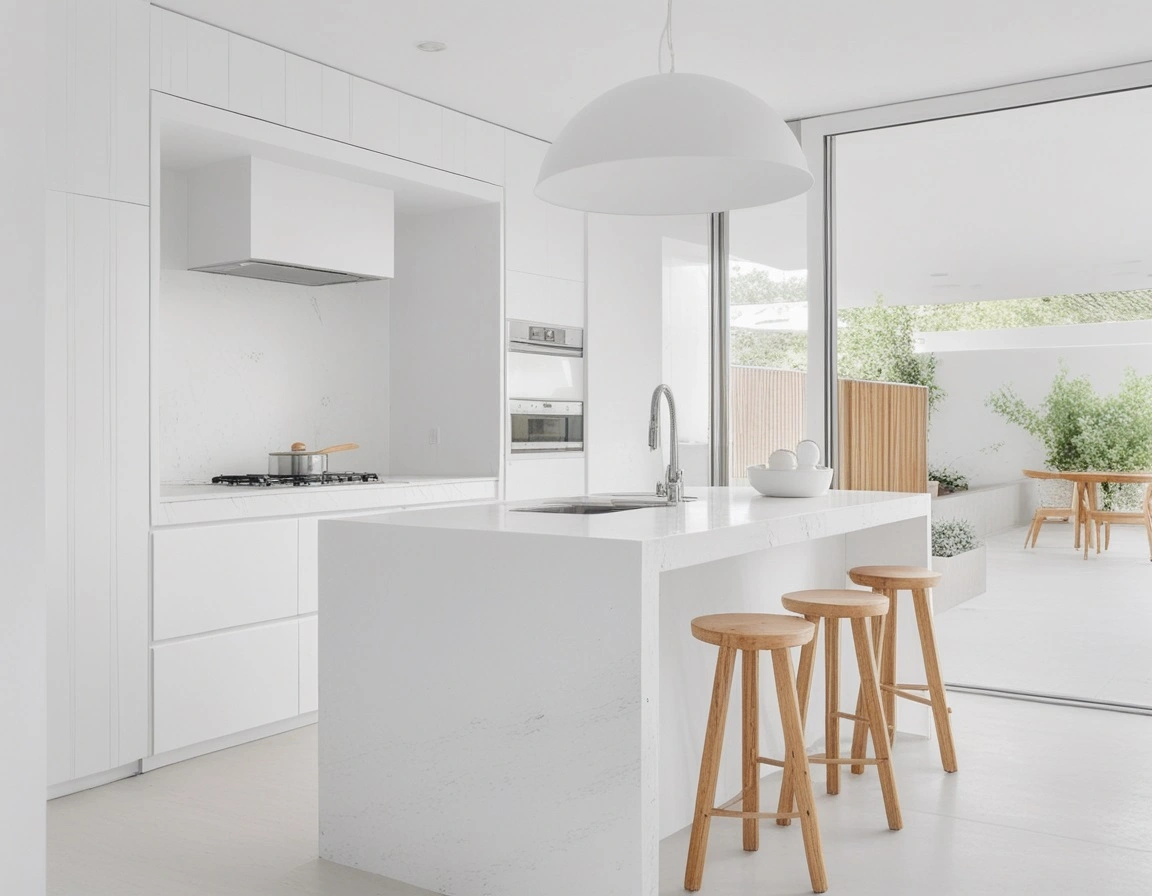
Final Thoughts
One of my favorite client success stories involves a family who was constantly ordering takeout because their kitchen felt too chaotic to cook in. After implementing these storage solutions, they found themselves enjoying cooking again and saving hundreds of dollars monthly on food costs.
Transitioning to a minimalist kitchen is a journey that can significantly impact your daily life. Not only does it make cooking easier and more enjoyable, but it can also promote mindful eating and reduce stress. With fewer items cluttering your space, you may find yourself more drawn to cooking healthy, home-cooked meals that bring you joy.
Remember, the goal isn’t to have the bare minimum or to compare your kitchen to someone else’s. The goal is to create a kitchen that works for you—a place that feels calm, organized, and functional. Whether you’re an avid cook or someone who keeps things simple, a minimalist kitchen helps make meal prep and cooking feel like a rewarding, enjoyable experience rather than a chore.
One more thing, if you want to maintain minimalist kitchen you definitely should NOT buy these kitchen gadgets.
